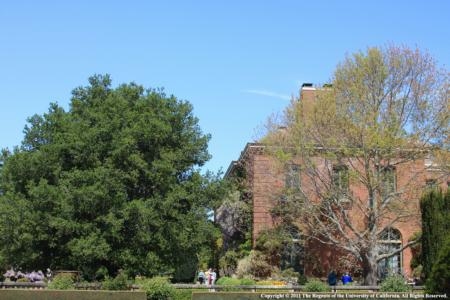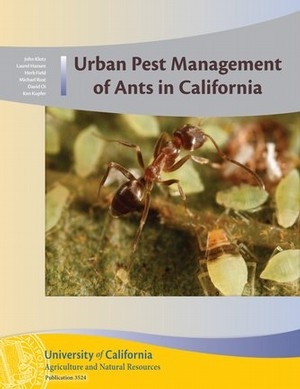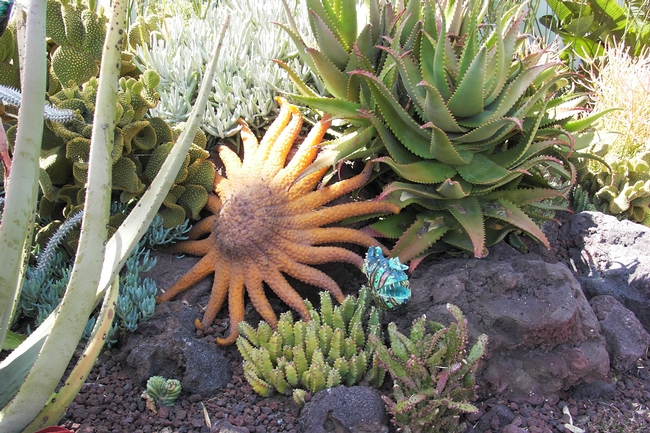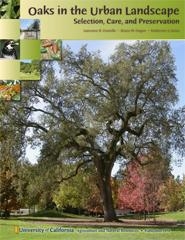Posts Tagged: publications
Six steps to a sustainable landscape
Does a beautiful, low-maintenance, cost-saving landscape that actually improves the environment sound like a dream? If so, wake up, and welcome to the world of sustainable landscaping. Sustainable landscaping combines planning and maintenance practices for a low-waste, low-environmental impact garden space. Sustainable Landscaping in California: How to Conserve Resources and Beautify your Home Landscape, a new free publication by UC Agriculture and Natural Resources (ANR) demonstrates how creating a sustainable landscape is attainable.
Below are six easy steps, drawn from the recommendations in the 21-page publication, to illustrate the core practices in building the landscape of your dreams.
- Choose the right plant
Selecting appropriate landscaping plants for your climate zone is the first step in practicing sustainable landscaping. If you live in the California desert growing tropical plants is probably not the most practical choice for your landscape needs. Visit the California Garden Web to learn more about your climate zone, and find resources for choosing the right plants for your garden. - Water wisely
A typical California household uses one-third to one-half of its water intake in outdoor irrigation. How can a homeowner reduce water use? The answer is simple – water less. Overwatering an established landscape is more common than underwatering. Well-established plants should not be watered every day, reduce water use with a deeper, less frequent irrigation method. - Prevent pests (safely)
Put down the pesticide! Integrated Pest Management (IPM) offers solutions for managing insects, diseases, weeds and other organisms. IPM techniques include eliminating pest habitats, encouraging natural enemies (for example, ladybugs for an aphid infestation), hand-weeding and applying mulch to your landscape. Only use pesticides after all other options have been explored and in the smallest quantities possible. - Get to know (and love) your soil
Understanding what type of soil you have, its strengths and limitations is the first step toward a sustainable home landscape you can be proud of. Take steps to show your soil love and improve it with compost, mulch, and aeration as needed. To amend soil mix with compost evenly and deeply to avoid a layered effect that inhibits proper plant growth. - Welcome wildlife
For a landscape to be truly sustainable it should provide a balanced ecosystem for a variety of plants and wildlife. Roll out the welcome mat in your landscape for birds, butterflies and other wildlife by providing access to food, water, and shelter. - Conserve energy
Conserving energy in your landscape is easy. Retire power-tools and use hands tools like a shovel, rake or broom. Install light-emitting diodes (LED) lighting, which requires less energy to operate and lasts longer than traditional bulbs. Reduce energy use in your home by planting a shade tree which helps keep the home cooler during hot summer months.
The University of California Master Gardener Program extends to the public UC research-based information about home horticulture, sustainable landscaping and pest management. In exchange for the training and materials received from the University of California, Master Gardeners perform volunteer services in a myriad of venues. If you are interested in becoming a certified UC Master Gardener contact a local UC Cooperative Extension office in your county.
UC publication lauded in San Francisco Chronicle
The UC Agriculture and Natural Resources publication Oaks in the Urban Landscape will be extremely effective in saving the lives trees, because "it is written clearly, packed with useful information and illustrated with some of the clearest photographs of any horticulture book I've read," said garden writer Pam Peirce in a San Francisco Chronicle column published yesterday.
Peirce noted that authors Laurence Costello, Bruce Hagen and Katherine Jones, are UC Cooperative Extension scientists with many years of experience teaching about urban landscapes. They cover the subject from how to grow an oak from an acorn to how an oak-tree silhouette changes as it matures and ages, and from how to select an oak tree to plant to how to recognize signs of impending death.
The writer concluded her column by saying Oaks in the Urban Landscape is the latest in a series of "terrific books issued by UC ANR" that include:
- Pests of the Garden and Small Farm
- Pests of Landscape Trees and Shrubs
- The Home Orchard
The article advised readers to look for the publications in local bookstores or order them form the ANR catalog or by calling (800) 994-8849.

UC's oak publication addresses not only the above ground portion of the trees, but also what is going on in the root zone.
Bringing ants to their 'skinny little knees'
Redding Record Searchlight columnist Laura Christman described her reaction to a stubborn ant problem with hyperbole and maybe a tiny bit of truth in a recent column.
"Get out! I do not care if I have to spray you with a chemical that has the half-life of plutonium and kills all living things within three blocks. I want you GONE!" Christman wrote.
"I did not actually say that," Christmas confessed. "But I thought it. And right about then, the ants left . . . . I know they will be back."
That's why, she said, she was pleased to have the opportunity to review UC ANR's new publication Urban Pest Management of Ants in California. The 72-page book, which details environmentally sound ant control measures, was written for pest control professionals, but is also a helpful reference for homeowners. The publication is available in the ANR Catalog for $20.
After talking to the author, UC Riverside entomology specialist emeritus John Klotz, and reading the book, Christmas reached a common sense conclusion: Controlling ants is not a matter of doing one thing, but several things.
Klotz told Christman that ants can be persistent, but with persistence they can be controlled.
"So I'm not giving up," Christman declared. "I hope to determine just who my ants are and then bring them to their skinny little knees."

A new publication that details urban ant control.




